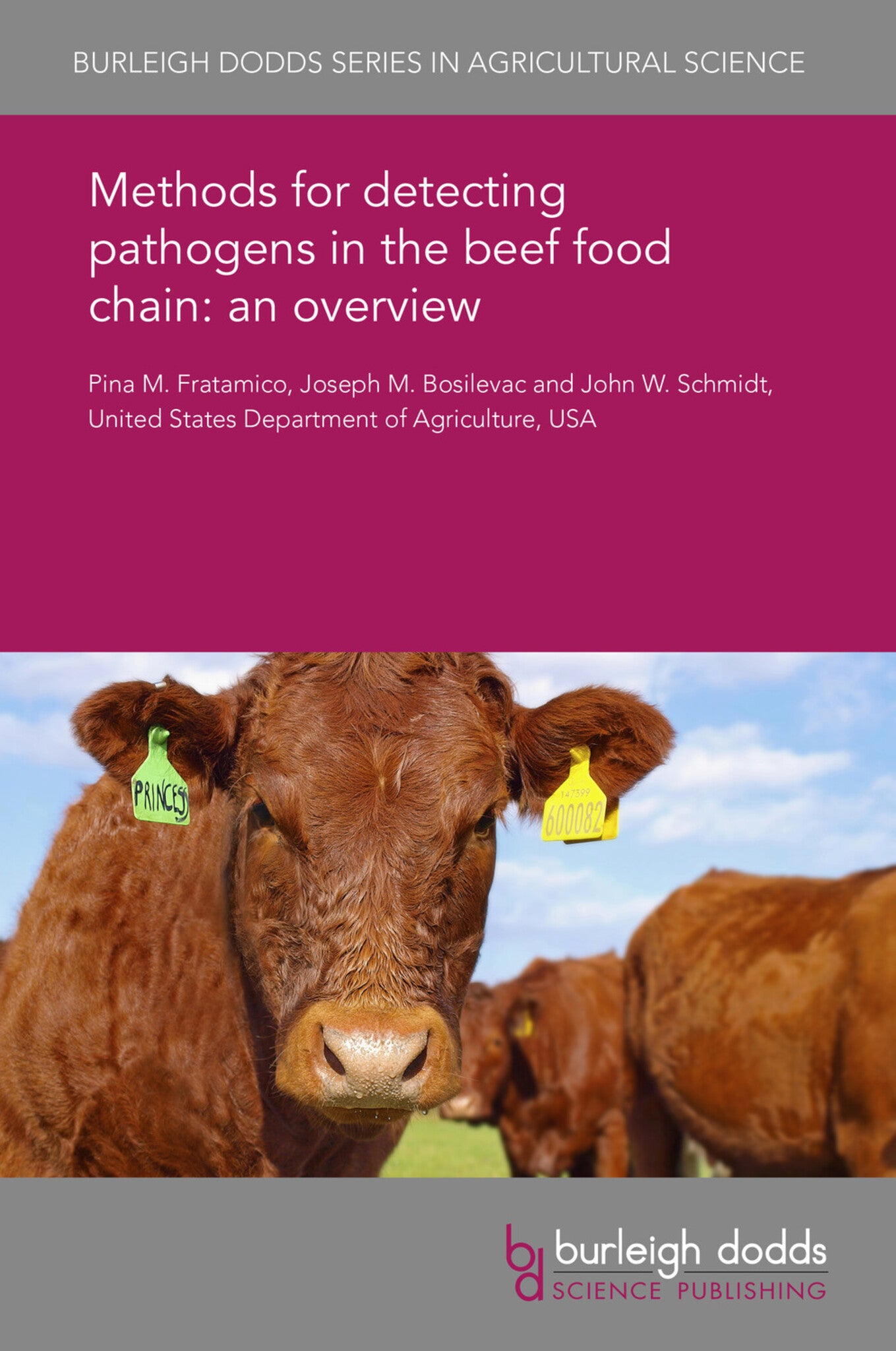We're sorry. An error has occurred
Please cancel or retry.
Methods for detecting pathogens in the beef food chain: an overview
Regular price
£25.00
Sale price
£25.00
Regular price
£0.00
Unit price
/
per
Sale
Sold out
Re-stocking soon
The main food-borne pathogens of concern in the beef chain are Shiga toxin-producing Escherichia coli (STEC) and Salmonella; other pathogens, including Listeria monocytogenes and Campylobacter spp....
Read More

Some error occured while loading the Quick View. Please close the Quick View and try reloading the page.
Couldn't load pickup availability
- Format:
-
31 March 2017

The main food-borne pathogens of concern in the beef chain are Shiga toxin-producing Escherichia coli (STEC) and Salmonella; other pathogens, including Listeria monocytogenes and Campylobacter spp. may also be present. Furthermore, the occurrence and development of antimicrobial-resistant (AMR) pathogens in the beef chain is a public health issue. Traditional culture-based methods are laborious and time consuming. Rapid methods, including nucleic acid-, immunologic- and biosensor-based techniques can be very sensitive and specific and provide more timely information regarding the presence of pathogens in the beef chain. This chapter reviews these methods, as well as recent advances in next-generation sequencing technologies.

Price: £25.00
Publisher: Burleigh Dodds Science Publishing
Imprint: Burleigh Dodds Science Publishing
Series: Burleigh Dodds Series in Agricultural Science
Publication Date:
31 March 2017
ISBN: 9781838790226
Format: eBook
BISACs:
TECHNOLOGY & ENGINEERING / Agriculture / Sustainable Agriculture, Animal breeding, TECHNOLOGY & ENGINEERING / Agriculture / Animal Husbandry, Sustainable agriculture

1 Introduction 2 Rapid methods for detecting pathogens in beef 3 Advantages and limitations of rapid methods 4 Detecting antibiotic resistance in pathogens 5 Summary and future trends 6 Where to look for further information 7 References



